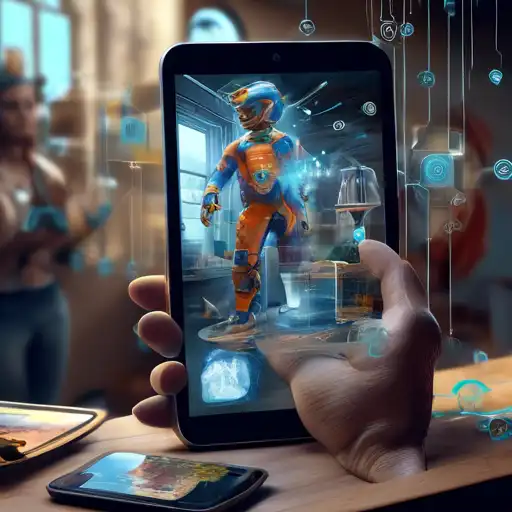Augmented Reality: The Future of Digital and Physical World Integration
Augmented Reality (AR) is transforming the way we interact with the world around us, blending digital elements with our physical environment to create immersive experiences. From gaming and entertainment to education and retail, AR is paving the way for innovative applications that enhance our daily lives.
Understanding Augmented Reality
At its core, Augmented Reality overlays digital information—such as images, sounds, and text—onto the real world. Unlike Virtual Reality (VR), which creates a completely artificial environment, AR enhances the real world with digital details, offering a composite view that enriches user interaction.
The Impact of AR Across Industries
AR technology is making waves across various sectors. In retail, for example, AR allows customers to visualize products in their own space before making a purchase. In education, it brings learning materials to life, making complex concepts easier to understand. The healthcare industry is also benefiting from AR, with applications ranging from surgical planning to patient education.
How AR Works
AR technology relies on devices such as smartphones, tablets, and AR glasses to display digital content. These devices use cameras and sensors to detect the user's environment and overlay digital information in real-time. Advanced AR systems also incorporate machine learning and artificial intelligence to improve the accuracy and relevance of the digital overlay.
Challenges and Opportunities
Despite its potential, AR faces challenges such as hardware limitations and privacy concerns. However, ongoing advancements in technology are addressing these issues, opening up new opportunities for AR applications. As AR becomes more accessible, its impact on society and the economy is expected to grow significantly.
Getting Started with AR
For businesses and developers looking to explore AR, there are numerous tools and platforms available. From AR development kits to cloud-based AR services, the resources needed to create AR experiences are more accessible than ever. By leveraging these tools, organizations can develop innovative AR solutions that engage users and enhance their offerings.
Augmented Reality is not just a technological trend; it's a tool that bridges the gap between the digital and physical worlds. As AR technology continues to evolve, its applications will expand, offering endless possibilities for innovation and interaction. Whether you're a business owner, developer, or consumer, the future of AR holds exciting opportunities for everyone.
